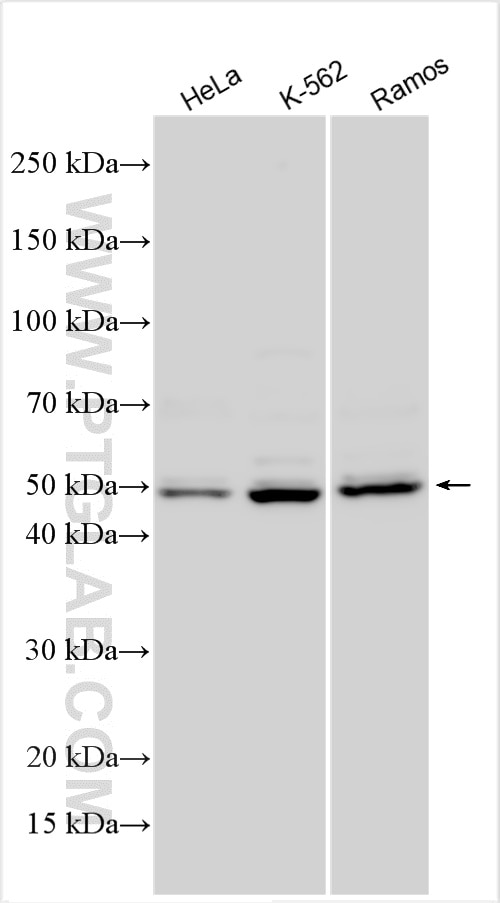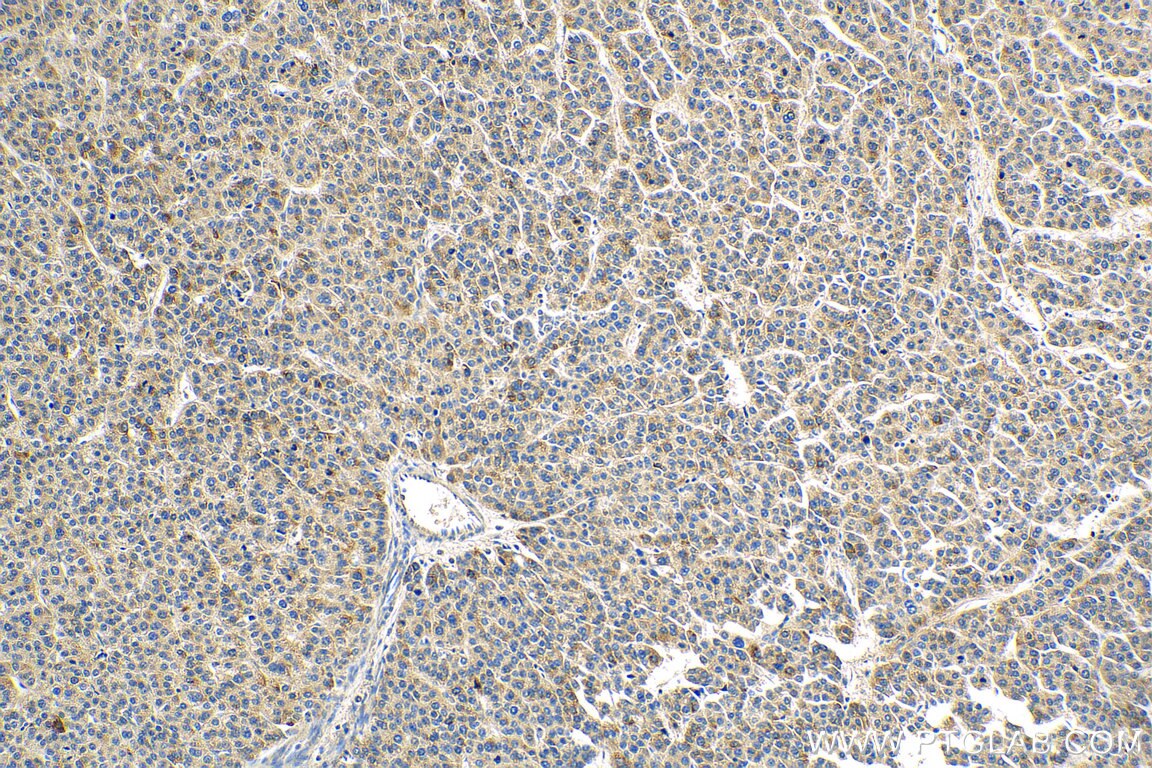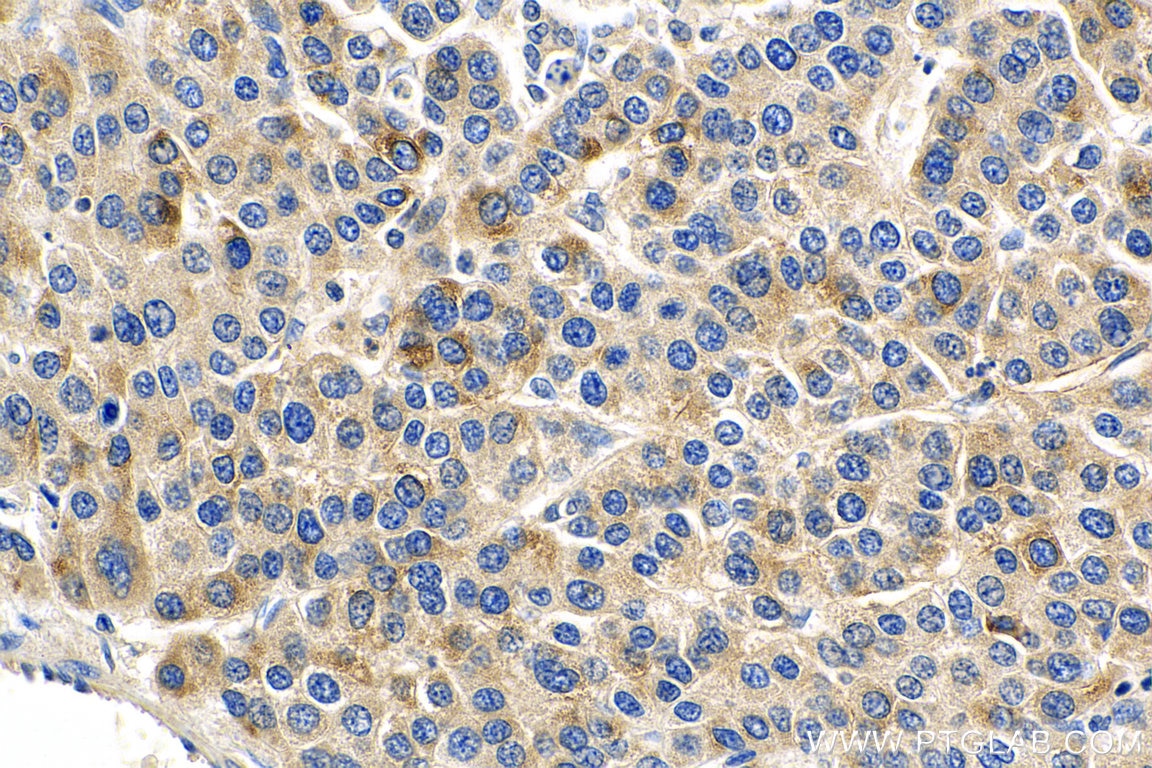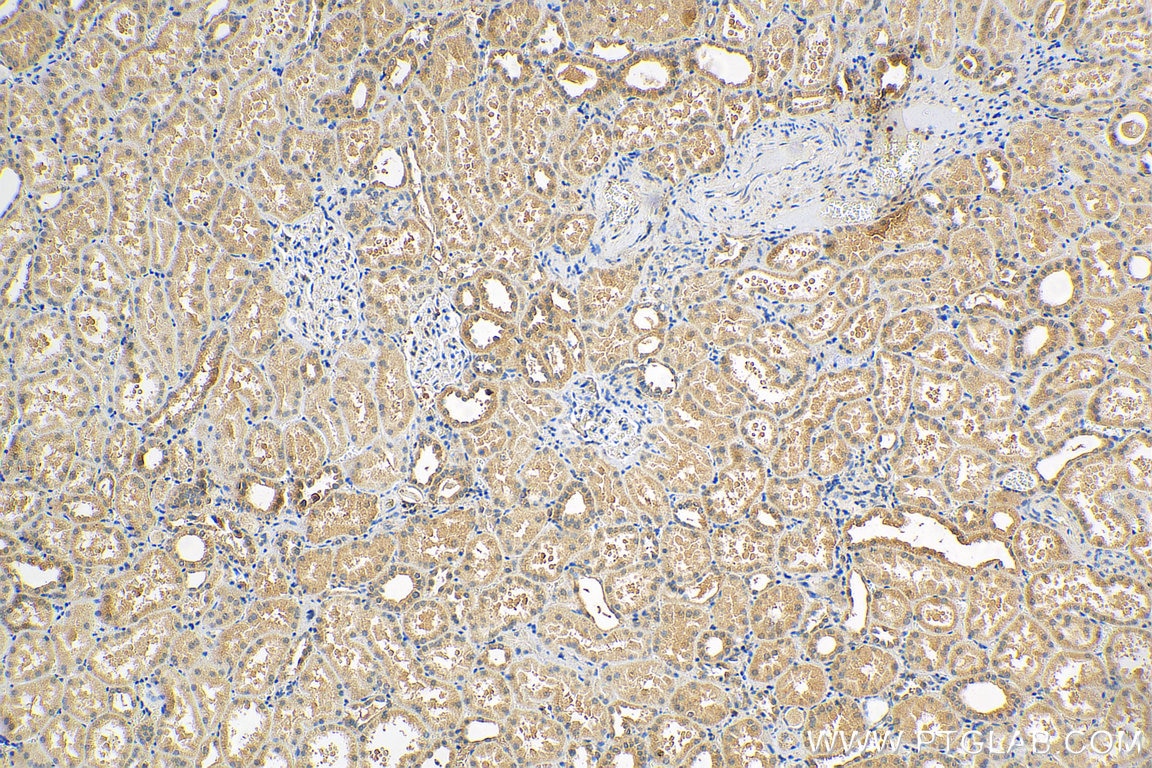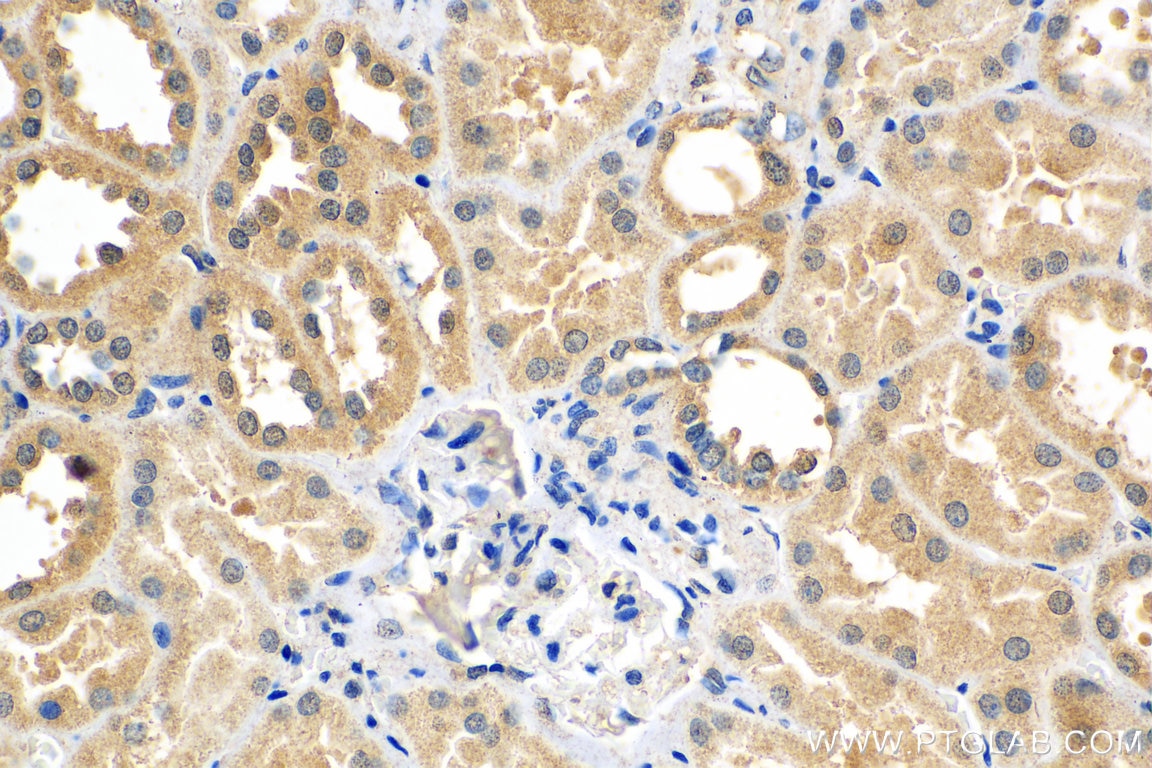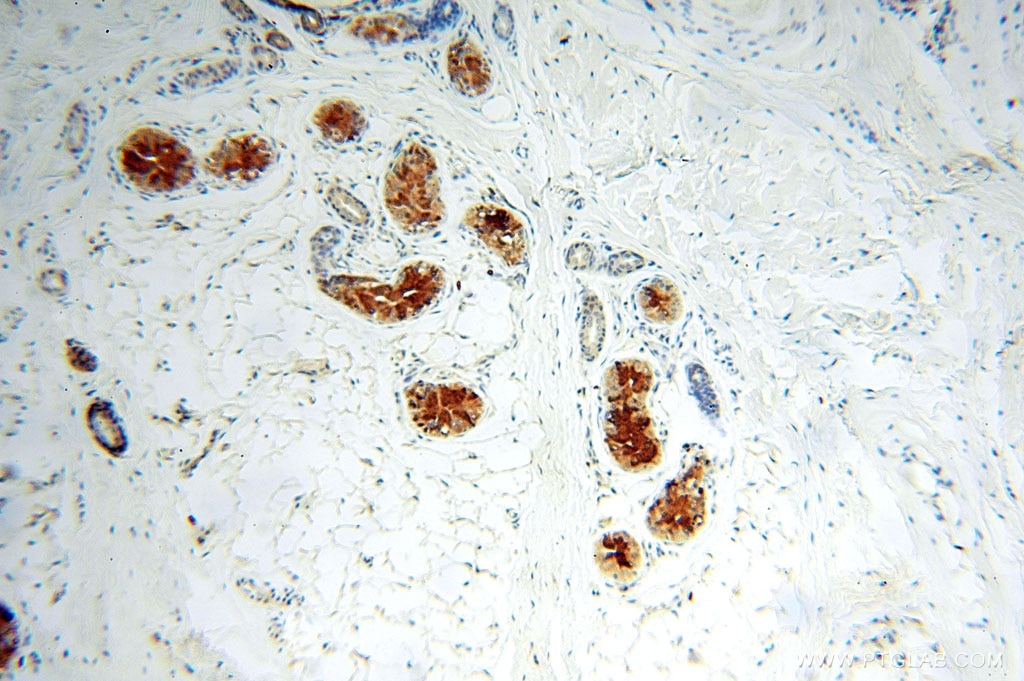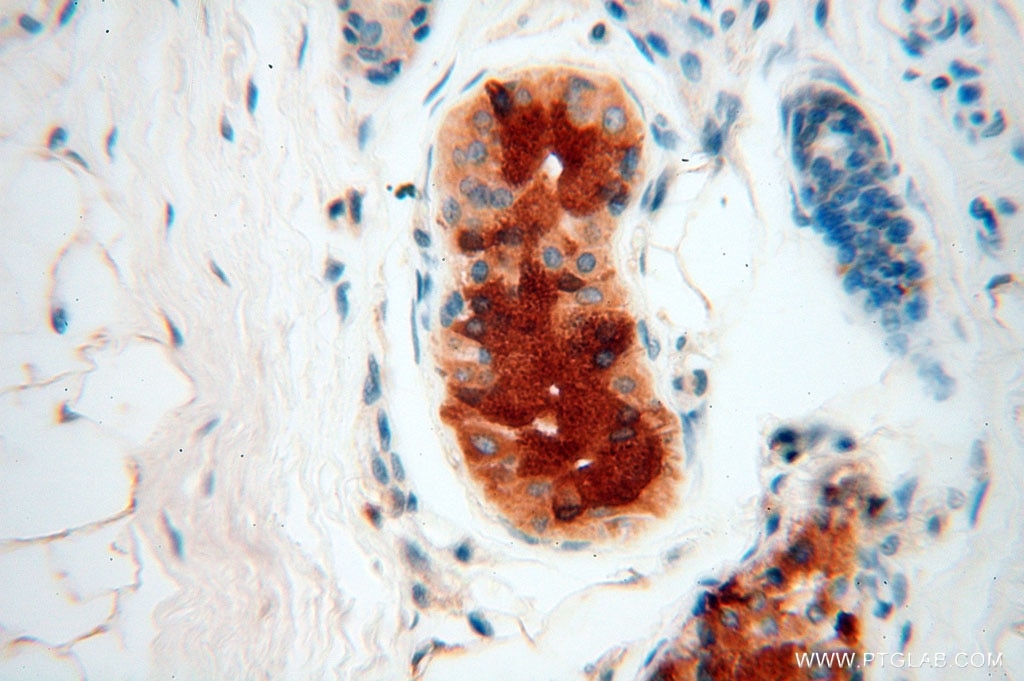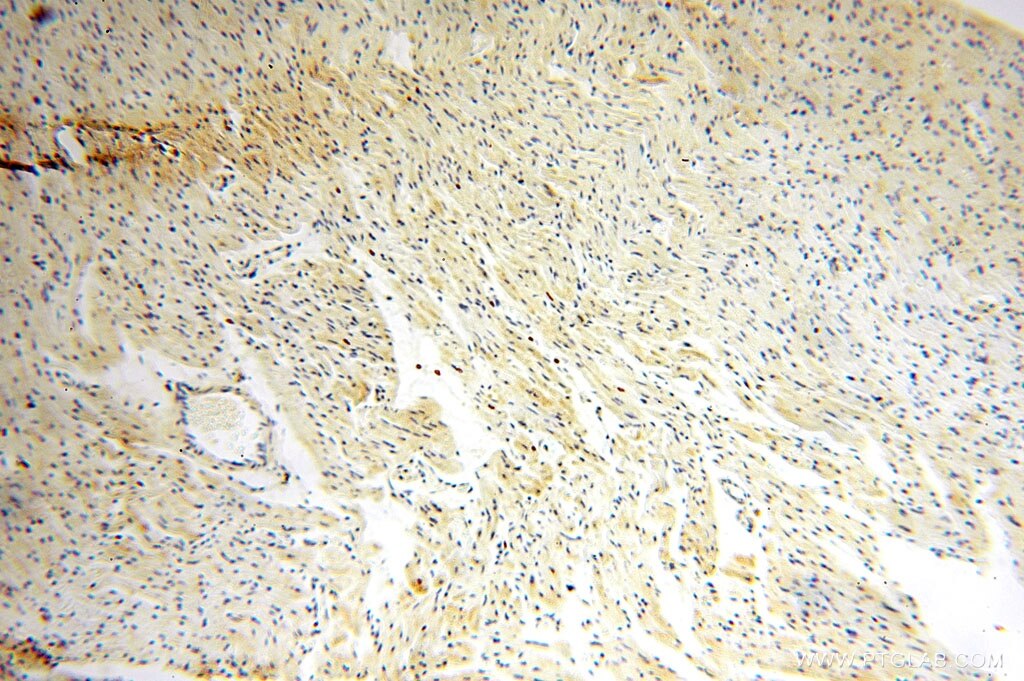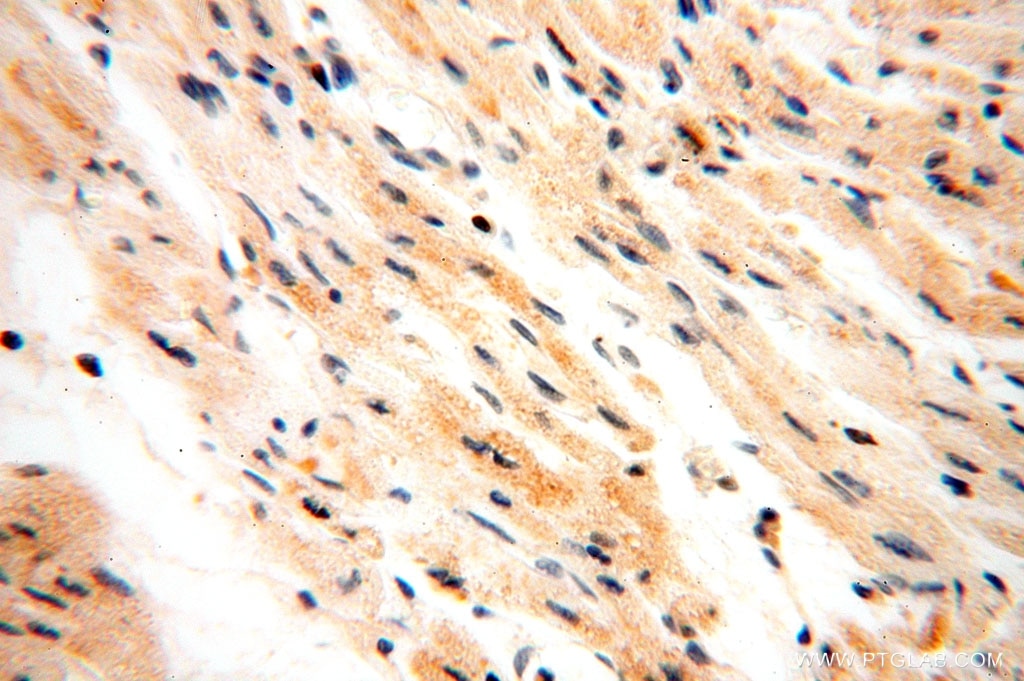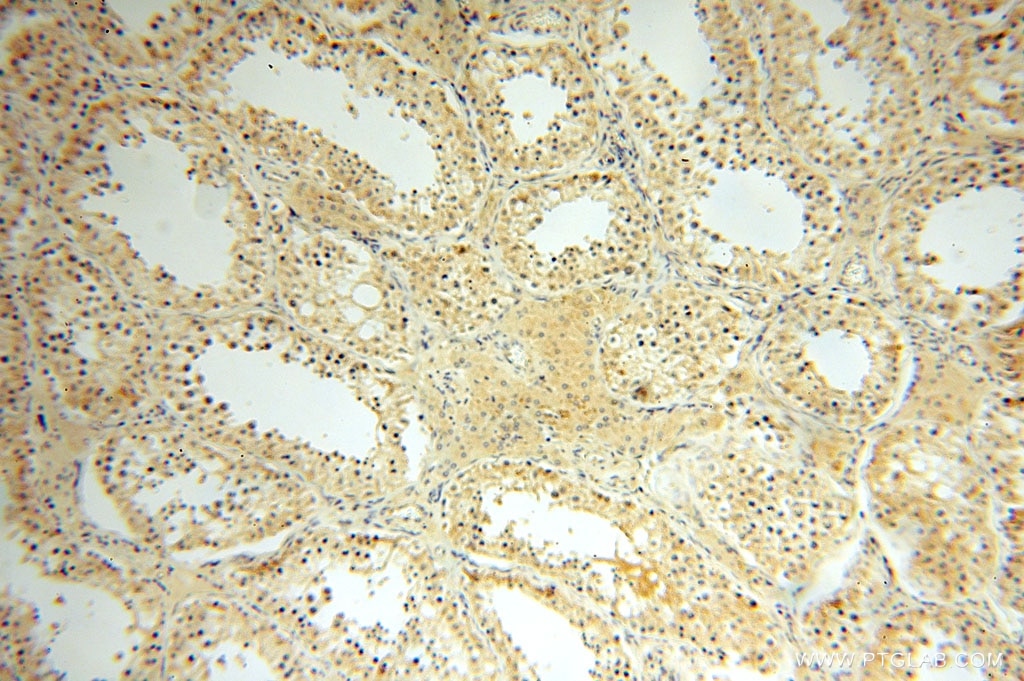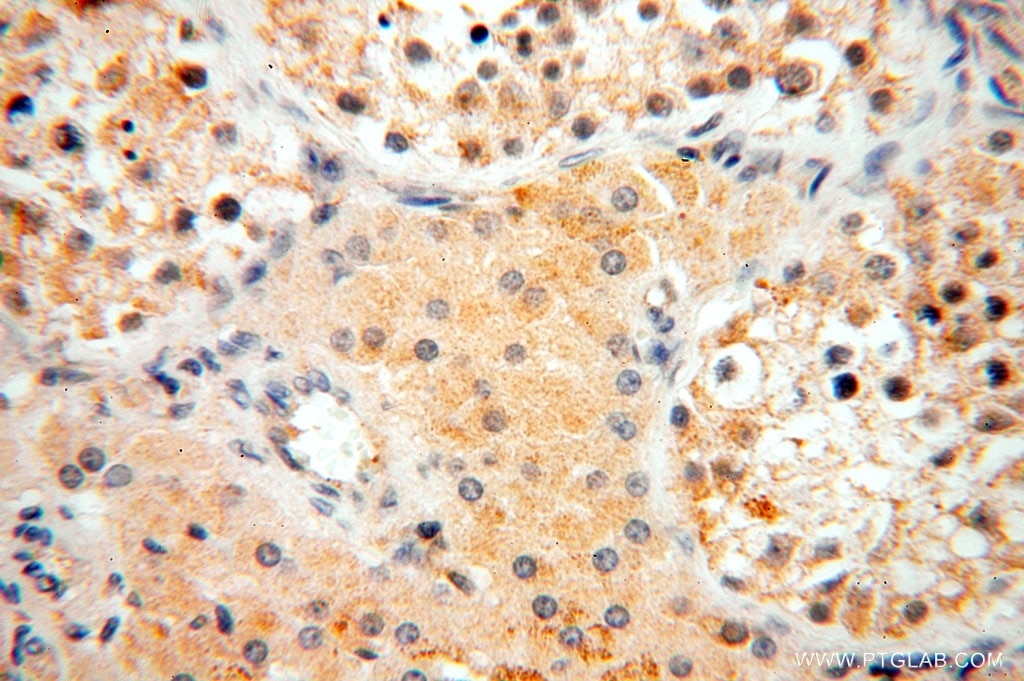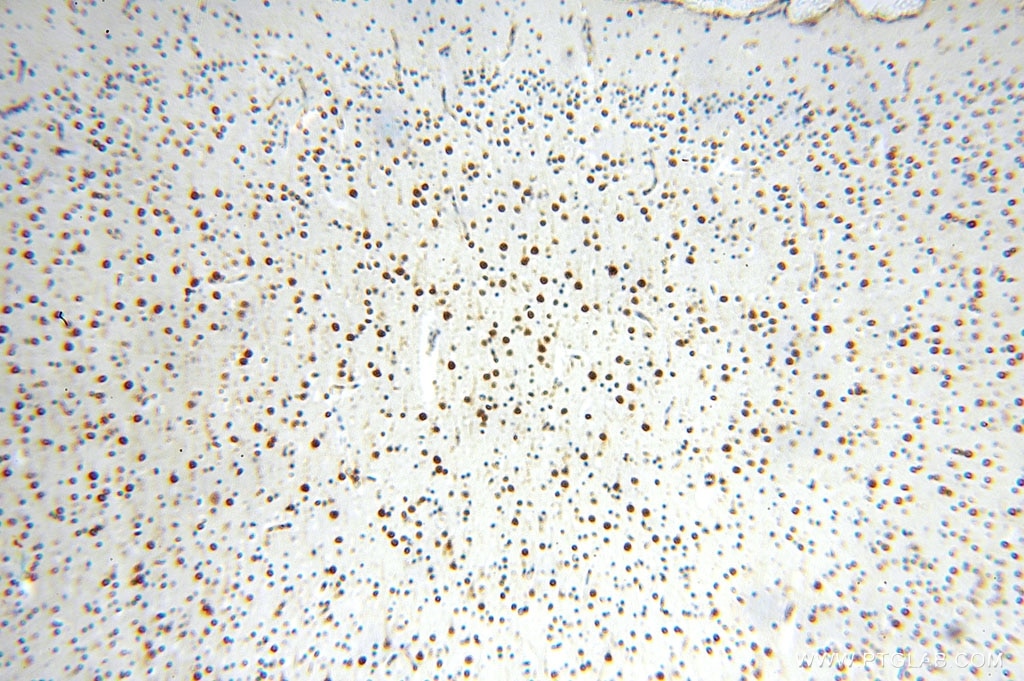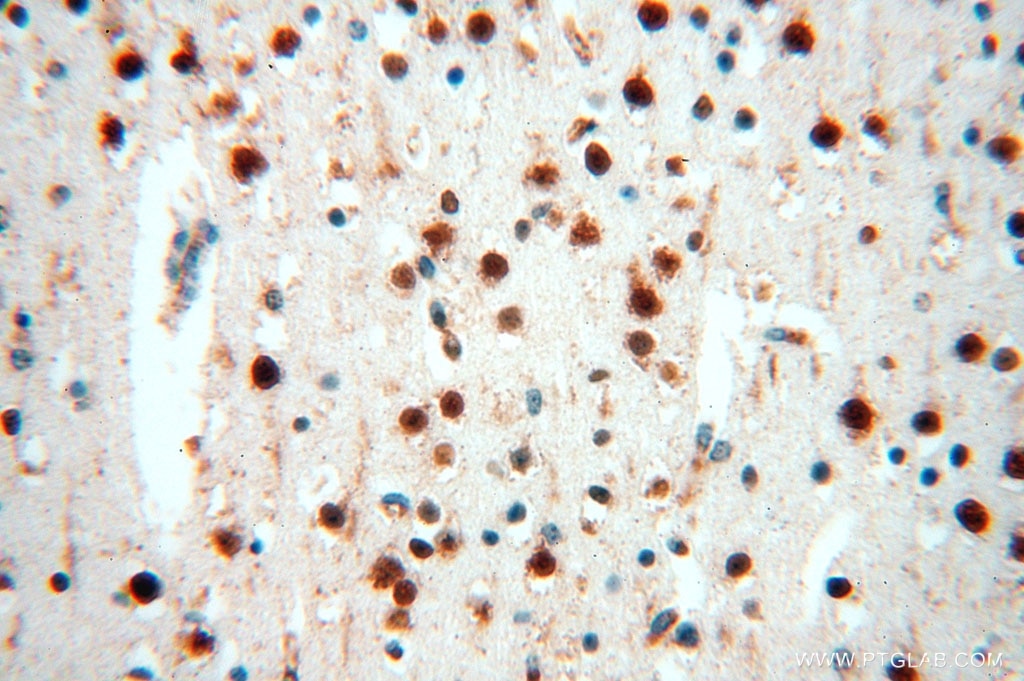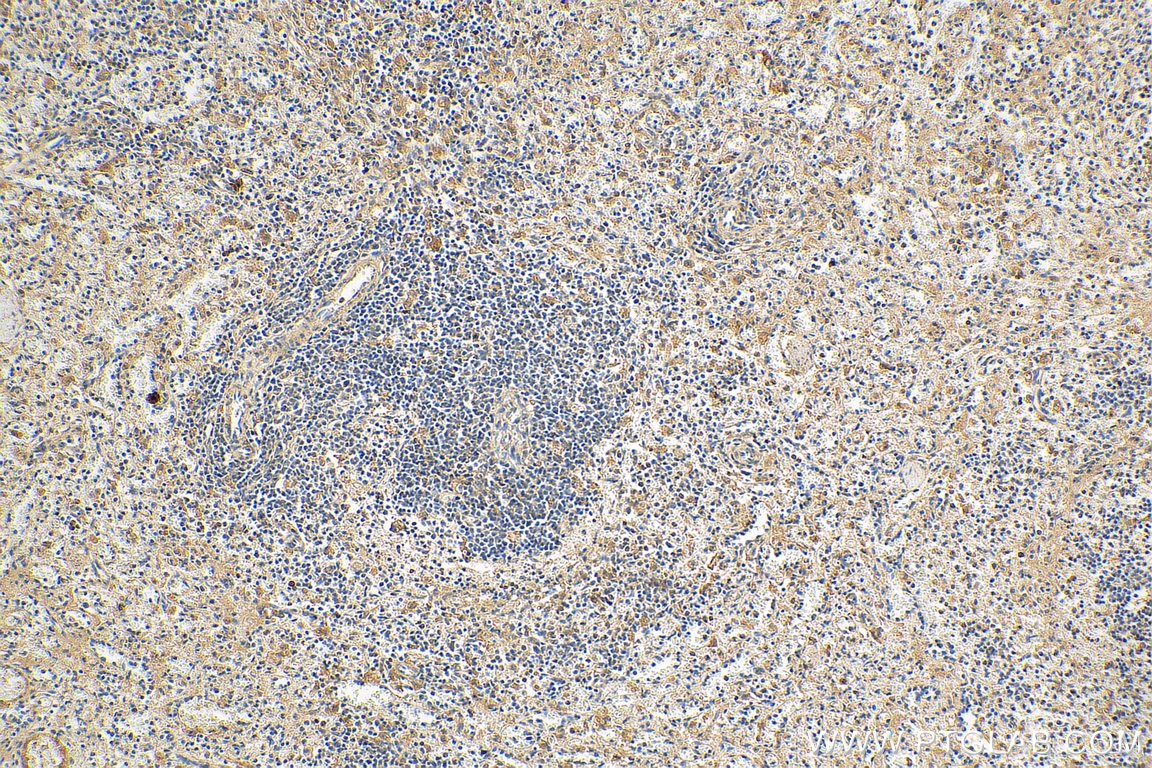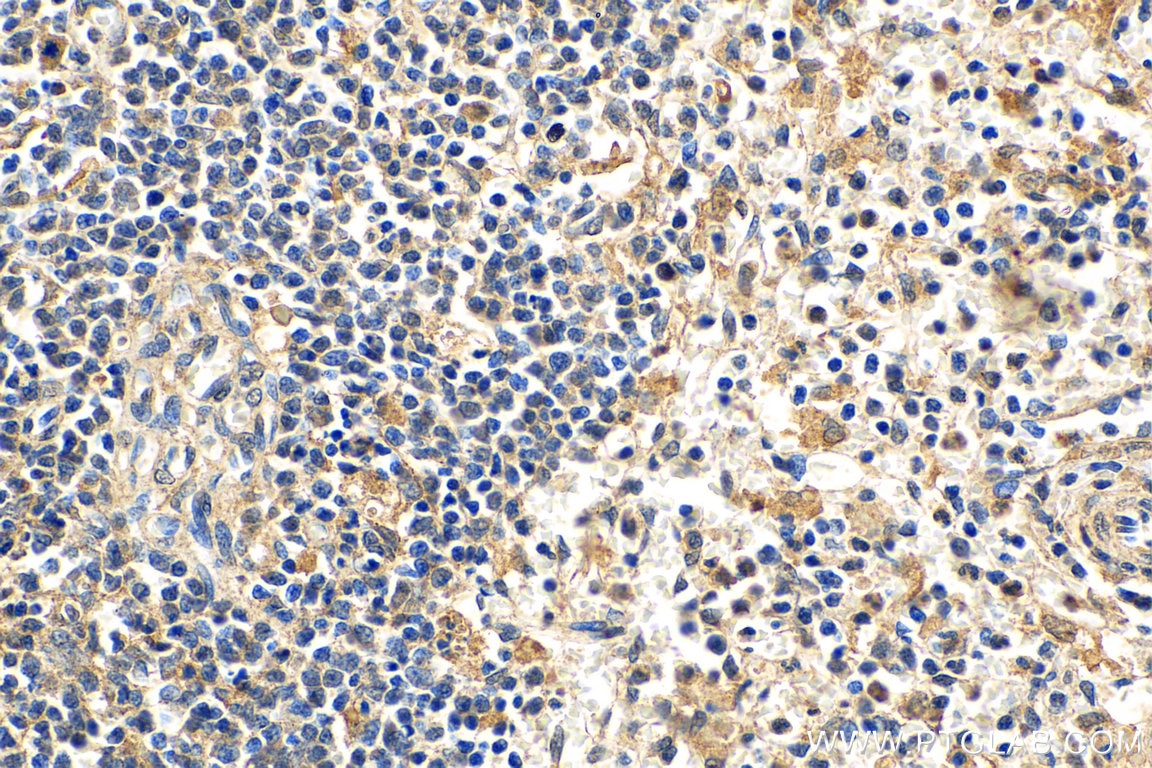Anticorps Polyclonal de lapin anti-IL-15RA
IL-15RA Polyclonal Antibody for WB, IHC, ELISA
Hôte / Isotype
Lapin / IgG
Réactivité testée
Humain et plus (1)
Applications
WB, IHC, IF, ELISA
Conjugaison
Non conjugué
N° de cat : 16744-1-AP
Synonymes
Galerie de données de validation
Applications testées
| Résultats positifs en WB | cellules HeLa, cellules K-562, cellules Ramos |
| Résultats positifs en IHC | tissu de cancer du foie humain, tissu cardiaque humain, tissu cérébral humain, tissu cutané humain, tissu rénal humain, tissu splénique humain, tissu testiculaire humain il est suggéré de démasquer l'antigène avec un tampon de TE buffer pH 9.0; (*) À défaut, 'le démasquage de l'antigène peut être 'effectué avec un tampon citrate pH 6,0. |
Dilution recommandée
| Application | Dilution |
|---|---|
| Western Blot (WB) | WB : 1:500-1:3000 |
| Immunohistochimie (IHC) | IHC : 1:50-1:500 |
| It is recommended that this reagent should be titrated in each testing system to obtain optimal results. | |
| Sample-dependent, check data in validation data gallery | |
Applications publiées
| WB | See 2 publications below |
| IHC | See 5 publications below |
| IF | See 1 publications below |
Informations sur le produit
16744-1-AP cible IL-15RA dans les applications de WB, IHC, IF, ELISA et montre une réactivité avec des échantillons Humain
| Réactivité | Humain |
| Réactivité citée | Humain, Hamster |
| Hôte / Isotype | Lapin / IgG |
| Clonalité | Polyclonal |
| Type | Anticorps |
| Immunogène | IL-15RA Protéine recombinante Ag10151 |
| Nom complet | interleukin 15 receptor, alpha |
| Masse moléculaire calculée | 231 aa, 24 kDa |
| Poids moléculaire observé | 50 kDa |
| Numéro d’acquisition GenBank | BC107777 |
| Symbole du gène | IL-15RA |
| Identification du gène (NCBI) | 3601 |
| Conjugaison | Non conjugué |
| Forme | Liquide |
| Méthode de purification | Purification par affinité contre l'antigène |
| Tampon de stockage | PBS with 0.02% sodium azide and 50% glycerol |
| Conditions de stockage | Stocker à -20°C. Stable pendant un an après l'expédition. L'aliquotage n'est pas nécessaire pour le stockage à -20oC Les 20ul contiennent 0,1% de BSA. |
Informations générales
Interleukin-15 (IL-15) is a pleiotropic cytokine that plays an important role in both innate and adaptive immunity. IL-15 is mainly produced by activated monocytes, macrophages and dendritic cells, and is structurally similar to IL-2 (PMID: 8178155; 12401478). These two cytokines share the same IL-2/15Rβ and common γ-chain receptor subunits. In addition, IL-2 and IL-15 have their own private α-chain receptor subunit, IL-2Rα and IL-15Rα, respectively (PMID: 7641685). The IL-15Rα chain is expressed by many cell types including monocytes, DCs, NK, T cells and fibroblasts. Several isoforms of IL-15Rα exist and are generated either by alternative splicing or by proteolytic cleavage (PMID: 10480910; 15265897). The calculated molecular weight of full-length IL-15Rα is 28 kDa, IL-15Rα can be glycosylated, and larger apparent molecular weights have been reported (PMID: 10480910; 15976182; 15671076; 17912462).
Protocole
| Product Specific Protocols | |
|---|---|
| WB protocol for IL-15RA antibody 16744-1-AP | Download protocol |
| IHC protocol for IL-15RA antibody 16744-1-AP | Download protocol |
| Standard Protocols | |
|---|---|
| Click here to view our Standard Protocols |
Publications
| Species | Application | Title |
|---|---|---|
Nat Commun An Artificial Intelligence-guided signature reveals the shared host immune response in MIS-C and Kawasaki disease. | ||
Clin Sci (Lond) HMGB1-induced autophagy facilitates hepatic stellate cells activation: a new pathway in liver fibrosis. | ||
Stem Cells Dev Human gastric cancer mesenchymal stem cell-derived IL15 contributes to tumor cell EMT via up-regulation of Tregs ratio and PD-1 expression in CD4+T cell. | ||
Immunology Interleukin-15 receptor α expression in inflammatory bowel disease patients before and after normalization of inflammation with infliximab. | ||
